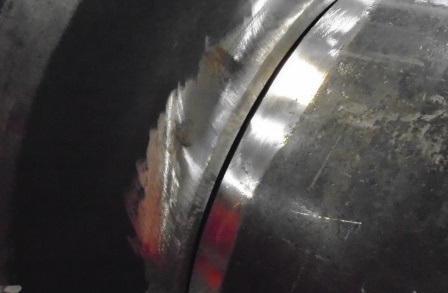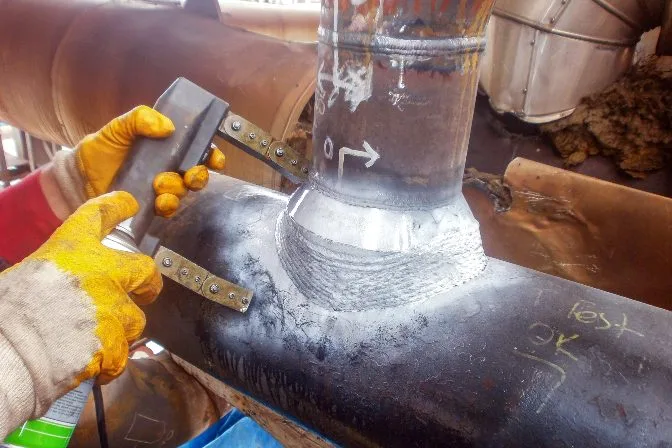A Thorough List for Effective Welding Assessment Practices
In the realm of welding, the stability of structures is critical, requiring a rigorous strategy to examination techniques. An extensive list functions as a vital device in making certain adherence to sector standards, encompassing vital pre-welding, in-process, and post-welding analyses. By methodically dealing with material verification, weld top quality, and complete documents, companies can substantially improve security and performance. What particular aspects should be focused on in each phase to attain optimal results? Checking out these critical elements can generate insights that profoundly effect welding procedures.
Recognizing Welding Standards
Welding standards play an important role in making sure the top quality and safety of bonded frameworks and parts. These criteria develop the requirements for products, treatments, testing, and evaluation, thus providing a structure for consistent quality control in welding processes. Numerous companies, consisting of the American Welding Society (AWS), the International Organization for Standardization (ISO), and the American Culture of Mechanical Designers (ASME), have developed comprehensive criteria that control various facets of welding.
Comprehending welding standards is necessary for specialists in the field, as adherence to these guidelines reduces the danger of issues and failures in bonded joints. These requirements cover particular needs for weld top quality, including acceptable tolerances, the kind of welding techniques to be made use of, and the credentials needed for welders and inspectors.

Pre-Welding Assessment Steps
Prior to any type of welding process begins, an extensive pre-welding examination is vital to identify prospective issues that might jeopardize the top quality of the weld. This first step acts as a vital structure for ensuring conformity with suitable welding codes and requirements.
The initial step in the pre-welding evaluation is to validate the materials being used. Next off, it is important to inspect the fit-up of the parts to make sure correct placement and joint configuration.
In addition, evaluating the sanitation of the surface areas is crucial; impurities such as corrosion, oil, or paint can negatively influence the top quality of the weld. Following this, a detailed evaluation of the welding devices must be carried out, making certain that it is calibrated and in excellent working condition.
Finally, reviewing the certifications of the welding employees is crucial. Welders should have the needed accreditations and experience to do the details welds needed for the task. By sticking to these pre-welding inspection actions, the likelihood of defects and failings in the final weld can be considerably minimized.

In-Process Inspection Techniques
In-process inspection methods play a crucial role in ensuring the integrity and high quality of welds as they are being performed. These methods enable examiners to identify problems or inconsistencies from requirements in genuine time, consequently stopping expensive repairs and ensuring adherence to design needs.
One secret strategy includes aesthetic assessment, where examiners evaluate the weld bead for harmony, penetration, and appropriate account. This can be matched by the use assesses to measure weld dimensions, making sure conformity with predetermined resistances. Additionally, the application of non-destructive testing (NDT) approaches, such as ultrasonic screening or magnetic more info here bit screening, throughout the welding process can reveal subsurface imperfections that might not be noticeable on the surface.
An additional vital aspect is checking welding specifications, consisting of voltage, amperage, and travel speed. Uniformity in these criteria is essential for accomplishing optimal weld top quality. Documenting these specifications throughout the welding procedure gives a traceable document for future referral.
Training employees in correct assessment techniques and using suitable tools improves the performance of in-process inspections. By integrating these practices, companies can attain better welds, lower rework, and inevitably make certain the safety and reliability of bonded frameworks.
Post-Welding Top Quality Checks
Following the conclusion of welding operations, post-welding quality checks are crucial to validate that the welds fulfill all specified demands and criteria. These checks are vital for guaranteeing the stability and resilience of the welded joints. The examination process normally starts with a visual assessment, examining for surface area flaws such as cracks, porosity, or insufficient blend.
Ultimately, non-destructive screening (NDT) techniques, such as ultrasonic screening, radiographic testing, or magnetic bit screening, may be employed to find interior flaws that are not visible to the nude eye. Each approach has its unique advantages and is chosen based on the weld's location, product kind, and the nature of the application.
Additionally, verifying dimensional precision is an important aspect of post-welding top quality checks. This entails measuring the weld's positioning, size, and account to guarantee conformity with design specifications. Assessing the mechanical buildings of the weld, consisting of tensile strength and ductility, can supply further assurance of performance under functional conditions. Overall, complete post-welding inspections are important for keeping security, adherence, and performance to regulative and market standards.
Documents and Coverage
Just how can efficient documents and reporting boost the welding evaluation procedure? Exact documentation and comprehensive coverage are essential elements that make certain the honesty and top quality of welding operations. Welding Inspection Milwaukee. They function as a formal record of assessment searchings for, facilitating liability and traceability in compliance with market requirements

A well-structured coverage system makes it possible for examiners to clearly interact any kind of discrepancies, locations, or non-conformances calling for enhancement. This openness cultivates a setting of constant enhancement, as stakeholders can conveniently examine previous efficiency and implement restorative activities.
Furthermore, reliable documentation consists of next page thorough records such as welding treatment requirements (WPS), welder credentials, and examination lists. These elements provide a framework for evaluating weld quality and adherence to developed guidelines. In the event of conflicts or quality problems, complete documentation acts as a trustworthy referral, reducing obscurity and securing all parties involved.
Last but not least, maintaining arranged records aids in training and certifying personnel, guaranteeing that industry finest techniques are maintained. Eventually, precise paperwork and reporting not just boost the welding evaluation process however additionally add to the overall security and reliability of bonded structures.
Final Thought
To conclude, a detailed list for effective welding assessment practices is important for making sure top quality and security in welded frameworks. Adherence to established welding standards, precise pre-welding examinations, rigorous in-process evaluations, and detailed post-welding high quality checks jointly add to the honesty of bonded joints. Additionally, thorough documents and coverage of inspection searchings for boost liability and promote continual improvement. Implementing these practices will significantly assist in compliance with sector requirements and ultimately promote a culture of top quality in welding operations.
Welding requirements play an essential role in making certain the top quality and safety and security of bonded structures and elements. Various companies, Go Here consisting of the American Welding Society (AWS), the International Organization for Standardization (ISO), and the American Culture of Mechanical Engineers (ASME), have developed detailed standards that govern various elements of welding.
Complying with the completion of welding operations, post-welding quality checks are important to verify that the welds meet all defined standards and needs - Welding Inspection Milwaukee.In final thought, a thorough checklist for efficient welding inspection techniques is vital for ensuring high quality and safety and security in welded structures. Adherence to established welding requirements, precise pre-welding examinations, strenuous in-process evaluations, and extensive post-welding top quality checks jointly contribute to the stability of welded joints